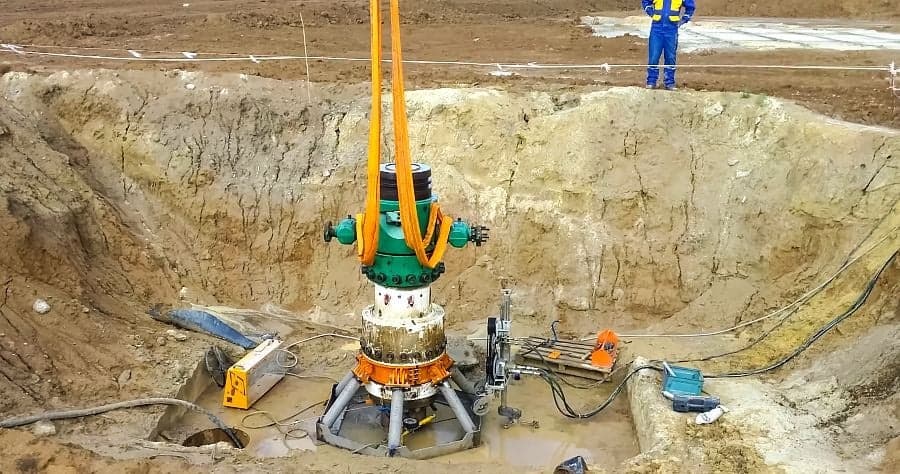Despite the fluctuations in job demand, oilfields will forever be a necessary and lucrative industry.
Whether you are currently involved in the oilfield industry, or are looking to get involved in this business, oilfield decommissioning may be a sector worth your interest.
With so many oil rigs reaching the end of their life span, and regulations dictating their proper decommissioning and dismantling, the need for qualified workers to carry out decommissions will always be in demand.
If this is something that may be worth your while, read on to learn more about oilfield decommissioning and the future of its employment:
What is Oilfield Decommissioning?
Oilfield decommissioning is the process of safely plugging holes in the earth’s surface and disposing of the equipment used in offshore oil production.
While there are many risks involved with oilfield decommissioning, it is quickly developing a market sector in the petroleum industry.
Decommissioning is a long and complex process that requires almost as many workers as it takes to run a fully operating platform.
There are ten stages involved in decommissioning:
- Project Management
- Engineering and Planning
- Permits and Compliance
- Platform Preparation
- Well Plugging and Abandonment
- Conductor Removal
- Mobilization and Demobilization of Derrick Barges
- Platform Removal
- Pipeline and Power Cable Decommissioning
- Materials Disposal and Site Clearance
As you can see, decommissioning is an involved process that requires many hands from project managers to planning engineers as well as health and safety advisors, engineers and laborers.
Why is Oilfield Decommissioning Done?
Decommissioning in the final stage of an oil and gas project.
Once the field production has come to an end, and all of the usable oil and gas has been processed, the facilities are dismantled and the surrounding area is returned to its previous condition.
Another reason for decommissioning oil and gas projects is because law and acts require it to be done.
For instance, Petroleum Act 1998 requires that decommissioning be executed for rigs located in the area of the North Seas.
Similar acts exist around the world such as the CER (Canada Energy Regulator) outlined by the National Energy Board of Canada and individual state laws in the U.S.
This is to prevent petroleum companies from simply abandoning their equipment when a job is finished as well as improperly dismantling equipment and causing harm to workers and the environment.
Safety Considerations with Industrial/Oilfield Decommissioning
Although oilfield decommissioning provides considerable opportunities to companies and workers, it does pose safety challenges in the industry.
Because the decommissioning process can take time, humidity, salt water and adverse weather can cause corrosion and affect the structural integrity of the rig.
Small objects can cause serious injury or damage when dropped from considerable heights, creating risks to both workers and equipment. This reduced strength of the structure can also lead to the collapse of critical areas.
Not only does this pose significant risk to personnel, but to the ecosystem as well. Having components drop into the sea can cause environmental damage to the natural habitat of local sea creatures.
Another consideration is the fact that decommissioning requires a large labor force, so large numbers of workers will be working around the structure.
This also leads to the increased use of high-risk equipment such as cranes and other lifting equipment.
Career Outlook and Jobs in Oilfield Decommissioning
While the oilfield industry experiences its share of ups and downs when it comes to employment, the fact that decommissioning requires a large work force means that jobs are always available in this field.
In 2013, oil and gas decommissioning jobs grew by 20% and, with the number of large surface platforms coming to the end of their productive life in the next two or three decades, this field can potentially create up to 6000 new jobs.
This stimulation of decommissioning will create a high demand for industry specialists, especially those with decommissioning experience.
However, skilled laborers are also necessary, increasing the number of jobs required to complete the task.
Some of the jobs available for oilfield decommissioning include:
- Decommissioning Engineer: responsible for developing technologies and processes for the decommissioning of oil and gas production installations.
- Decommissioning Health and Safety (HSE) Advisor: responsible for providing advice and guidance to prevent accidents, injuries and health issues.
- Decommissioning Manager: responsible for delivering business plans and developing decommissioning expertise and capability.
- Decommissioning Planning Engineer: responsible for developing activity plans and monitoring progress.
- Laborers: responsible for carrying out the tasks necessary to complete the decommission.
The process of decommissioning and dismantling an oil rig is almost as labor-intensive as building one, making it a project rife with job opportunities.
Interested in learning more about job opportunities in the oilfield industry? Check out Energy Job Shop’s listings of exciting new career opportunities!

